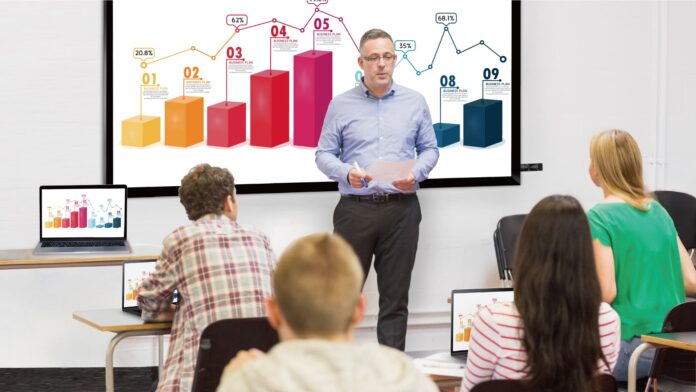With the growth of technology, the start of the Fourth Industrial Revolution, and the global pandemic, the world of education continues to evolve and transform. All of this has had a huge impact on educational systems around the world, resulting in a slew of new learning trends.
Technology has experienced numerous modifications over the years, making it a valuable asset to a variety of societal sectors. It has become critical for instructors to adequately engage their pupils; they must stay current on technical, pedagogical, and other crucial variables that influence classroom learning.
Let’s take a look at the top five developing education trends to keep an eye on.
Hybrid education systems
Digital course offerings skyrocketed between 2020 and 2021. Even though post-secondary schools are returning to in-person sessions, the accessibility of online and hybrid programs will continue to dominate discussions about program development and recruitment in the coming decade.
Online and hybrid courses provide educational institutions with the opportunity to reach a larger audience without requiring significant new physical infrastructure. In addition, online learning environments can be used to deliver introductory and intermediate courses that help students prepare for full-time on-campus education.
Technology-based therapies are being used more frequently
With the advancement of technical capabilities, a wealth of media and learning-support technologies are now available to assist students in receiving a high-quality online education.
Teachers can use video chats, discussion boards, audio and video feedback on assignments, and other features given by most learning management systems, thanks to the emergence of the digital classroom and technology-infused instruction on platforms. Teachers’ capacity to use various learning styles has been enhanced as a result of hybrid learning.
Using AI in classrooms
Learning becomes more absorbing, engaging, and exploratory when artificial intelligence and virtual reality are used in the classroom. Students can use these tools to “get out” of their classrooms and investigate possibilities from afar. They will be able to encounter fresh and novel concepts through evolved encounters and virtual places, rather than just reading about them in textbooks.
In the recent decade, the world of education has increased dramatically, encouraging student learning both in and out of the classroom while also preparing students for their future employment. As we enter a new decade, these technologies are expected to broaden the paradigm of student learning, with digital technology facilitating unified and interactive learning experiences.
Soft skills are a must to have
The most sought-after abilities in the workplace will continue to be critical thinking, problem-solving, team building, and creativity. Employers want to see new hires make difficult decisions and demonstrate their leadership qualities. Higher education institutions that discover effective formulae for stimulating the development of these talents and making students more functional will have a competitive advantage. Every educational institution should provide the necessary training to assist students in developing and improving their soft skills.
Learning vs. teaching
Teachers’ relationships with their pupils in the classroom have evolved as digital classrooms have grown. Teachers have evolved into educational facilitators. They’re progressing toward a position where they can assist kids in understanding how to study, how to enjoy learning, and how to lay bare and comprehend the material they discover.
Learning has become more accessible and convenient, and aspirations have risen as a result. As we all saw during the global epidemic, modern technologies and new educational trends equip us with solutions to any issue. Students were able to maintain virtual connections with one another while continuing their education. We could not have envisioned something like this not long ago

